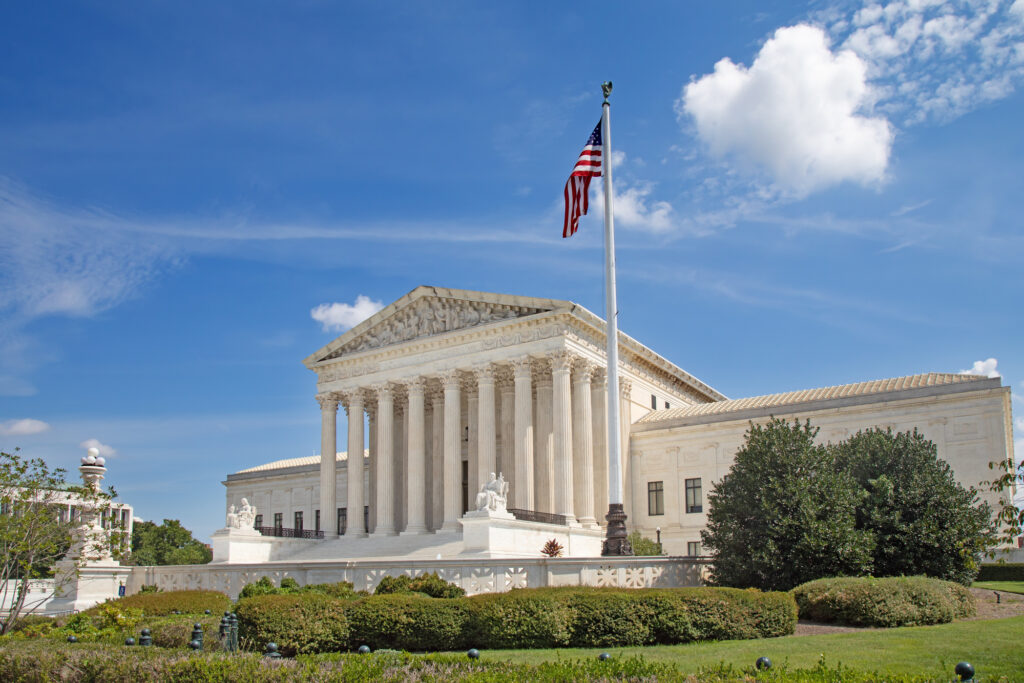
Last week the US Supreme Court issued its opinion in Harrington v. Purdue Pharma LP (In re: Purdue Pharma), 603 U.S. ____ (2024). The opinion impacts how an owner’s liability can be treated in their company’s bankruptcy reorganization. You likely have seen critics of the opinion say this is a horrible decision for victims of the opioid crisis and their families at the same time as others have said it’s a victory. While the implications for the victims and their families are uncertain, the decision clarifies an issue under the Bankruptcy Code that courts have made split decisions on for years.
Under the Bankruptcy Code the person filing for relief, known as the debtor, gets a “fresh start” from their obligations but putting most of their assets into repaying their outstanding obligations. Even when those assets aren’t enough to pay their debts in full, the debtor who successfully completes their bankruptcy isn’t required to pay the balance and is “discharged” from the remaining obligation.
What happens when the debtor is a company and the owners of the company are also responsible for the outstanding debts? Generally, those owners have to pay anything the debtor doesn’t. In its reorganization, however, Purdue Pharama filed a Plan of Reorganization (the “Plan”), essentially a repayment roadmap, that said its owners, the Sackler family, would pay a certain amount of the company’s debts through the Plan and in return, they would be released of all claims anyone could bring against them. In essence, for their payment of billions over 10 years, they would be release of potentially trillions of dollars of opioid victims and family member claims, and the repayment claims the company had against them.
There were positives to this proposal as well as negatives. The biggest negatives for the claimants was the release of potentially far more in liability than the Sacklers were paying. The biggest positive was that for hundreds of thousands of opioid victims and family members, a recovery fund would be created where they could seek relief with very little expense. Instead of years of litigation and thousands of dollars in legal fees, they could receive anywhere from $3,500 – $45,000 for their claims.
Justice Gorsuch, who wrote the opinion for the majority, noted:
- a debtor can win a discharge of its debts if it proceeds with honesty and places virtually all of its assets on the table for creditors…. Purdue’s long-time owners, members of the Sackler family, confronted a growing number of suits too. But instead of declaring bankruptcy, they chose a different path. From the court overseeing Purdue’s bankruptcy, they sought and won an order extinguishing vast numbers of existing and potential claims against them. They obtained all this without securing the consent of those affected or placing anything approaching their total assets on the table for their creditors. The question we face is whether the bankruptcy code authorizes a court to issue an order like that.
The Supreme Court said, “no.”
Interested in our services?
If you would like assistance with this or any other compliance matter, please contact Nancy at N D Greene PC by clicking on schedule an appointment.
SCHEDULE AN APPOINTMENTThe Supreme Court ruled Purdue’s bankruptcy plan cannot release non -debtor, (the Sackler family) from liability unless (likely all) the affected claimants agree. The bankruptcy code simply does not allow for the releases sought without the creditors’ approval.
The Court turned to the language contained in the Bankruptcy Code, which sets out what can be in a Plan. Section 1123(b)(6) is a “catchall” provision that allows the Plan Proponent to include other provisions “not inconsistent with the applicable provisions of this title.” It was under this section that Purdue and the Sacklers argued the release was allowed because it was not “expressly forbidden.” However, “catchall” provisions are read in context with the rest of the list they are included as part of to embrace only objects similar in nature. As noted in the opinion, “when a statute sets out a list discussing ‘cars, trucks, motorcycles, or any other vehicles,’ we appreciate that a catchall phase may reach similar landbound vehicles (perhaps including buses and camper vans), but it does not reach dissimilar ‘vehicles’ (such as airplanes and submarines).” When read this way, the catchall provision in §1123 only refers to rights or effects on the debtor as the other provisions only concern the debtor. As a result, it could not be used to grant rights to non-debtors like the Sacklers.
The opinion discussed three other reasons for rejecting a broader interpretation, but they all came down to the bankruptcy code was for the benefit and protection of debtors and should not be expanded without the consent of the impacted creditors.
The Court also considered public policy (the good of the public) in light of arguments that if the release were not allowed, the opioid settlements would likely collapse. The Court rejected these arguments and adopted the U.S. Trustee’s position that rejecting the Sackler releases would make it more likely for the Sacklers to negotiate consensual releases on terms more favorable to the opioid victims. When the first Plan was rejected based on the objections of various states, the Sacklers agreed to contribute another $1 Billion to obtain their consent. As a result, the Court noted that a better settlement might be possible if the Sacklers had to obtain the creditors consent for their release.
Even if a better settlement isn’t obtained in this case, the repercussions of allowing non-consensual third-party releases would be devastating. Generally, individuals who engage in fraud, willful injury, wrongful death and other torts (bad acts), can’t obtain a discharge of their debts in their own bankruptcy case. However, if they were able to secure a release of those claims in their business’s cases (as proposed in the Purdue Plan), those “bad actors” could do an end run around the bankruptcy system to avoid mass-tort liability. This too, shows this type of release is not allowed. The Court noted that Congress, not it, was the better place for the policy arguments.
The Court did not decide whether its opinion impacted the validity of cases where this type of release already had been approved, or what would qualify as a “consensual” release.
The end result is the Sacklers can’t force the releases on the opioid claimants in the Purdue bankruptcy case. If the Sacklers want bankruptcy protection, they have to file their own bankruptcy petitions.
In conclusion, when a business has to file for bankruptcy protection, the business’s owners are often left with guarantee and other business debt obligations they still have to
manage. Under the Purdue ruling, they won’t be able to manage these obligations in the company’s bankruptcy filings. Instead, they’ll need individual advise from a bankruptcy attorney about managing these resulting obligations, and whether an individual filing is in their best interest.
Before you go, do not forget to check out the rest of our blog entries. We have more advice, tips, and maybe even a few more laughs to share with you. As they say in the courtroom, “You may be excused… to explore our blog!”
Interested in our services?
If you would like assistance with this or any other compliance matter, please contact Nancy at N D Greene PC by clicking on schedule an appointment.
SCHEDULE AN APPOINTMENT